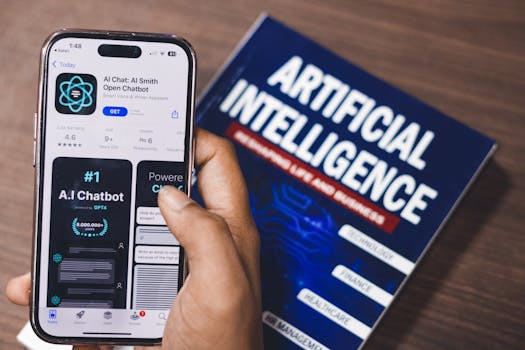
Exploring Emerging Trends in Artificial Intelligence and Machine Learning
Takeaways: This article explores the latest trends in artificial intelligence (AI) and machine learning (ML), including advancements in natural language processing, the rise of AI ethics, and the integration of AI in various industries. Stay informed about the future of technology and how these trends may impact your life and business.
Artificial Intelligence (AI) and Machine Learning (ML) have evolved rapidly over the past few years, transforming various sectors and creating new opportunities. As we move further into the 2020s, it’s essential to stay updated on the emerging trends that will shape the future of technology and business. In this article, we will delve into the most significant trends in AI and ML, focusing on their implications, applications, and future potential.
1. Natural Language Processing Advancements

The trend towards improved NLP capabilities is evident in various applications, from customer service chatbots to content generation tools. Businesses are increasingly leveraging NLP to enhance user experiences and streamline operations. For instance, AI-driven chatbots can handle customer inquiries 24/7, providing instant responses and freeing up human agents for more complex tasks.
Moreover, sentiment analysis tools powered by NLP can help companies gauge customer opinions and reactions, enabling them to tailor their strategies effectively. As NLP technology continues to evolve, we can expect even more innovative applications that will redefine how we communicate and interact with machines.
2. AI Ethics and Responsible AI

Organizations are beginning to prioritize ethical AI practices by establishing guidelines and frameworks to ensure the responsible use of AI. This trend is reflected in the rise of AI ethics boards and the development of standards for transparency and accountability in AI systems. Companies are also investing in bias detection tools to ensure their algorithms are fair and equitable.
Furthermore, the demand for AI transparency is leading to the creation of explainable AI (XAI) models. These models aim to make AI decisions more interpretable to users, helping to build trust and understanding. As awareness of AI ethics grows, we can expect to see more emphasis on developing technologies that prioritize human values and ethical considerations.
3. Integration of AI in Various Industries

In healthcare, AI is being used for predictive analytics, patient diagnosis, and personalized treatment plans. Machine learning algorithms can analyze vast amounts of medical data, helping healthcare professionals make informed decisions and improve patient care. For instance, AI-driven diagnostic tools can identify diseases from medical imaging faster and more accurately than traditional methods.
In finance, AI is transforming risk assessment, fraud detection, and algorithmic trading. Financial institutions are leveraging machine learning models to analyze customer behavior, detect anomalies, and optimize investment strategies. With the ability to process and analyze large datasets in real-time, AI is enabling more informed decision-making and enhancing operational efficiency.
Other industries, such as retail, manufacturing, and transportation, are also harnessing the power of AI to improve customer experiences, streamline operations, and reduce costs. As AI technology continues to mature, its integration into various sectors will only increase, driving innovation and growth.
4. The Rise of Generative AI

In the realm of art and design, artists and creators are using generative AI tools to explore new forms of expression and creativity. These technologies allow for the creation of unique images and music, pushing the boundaries of traditional artistic practices.
Moreover, generative AI is making waves in content creation for marketing and advertising. Brands are using AI-generated content to engage audiences and personalize their messaging. As generative AI continues to evolve, we can expect to see even more innovative applications that blur the lines between human creativity and machine-generated content.
In summary, the trends in artificial intelligence and machine learning are continually evolving, shaping the future of technology and its impact on various industries. By staying informed about these developments, businesses and individuals can better prepare for the opportunities and challenges that lie ahead.




